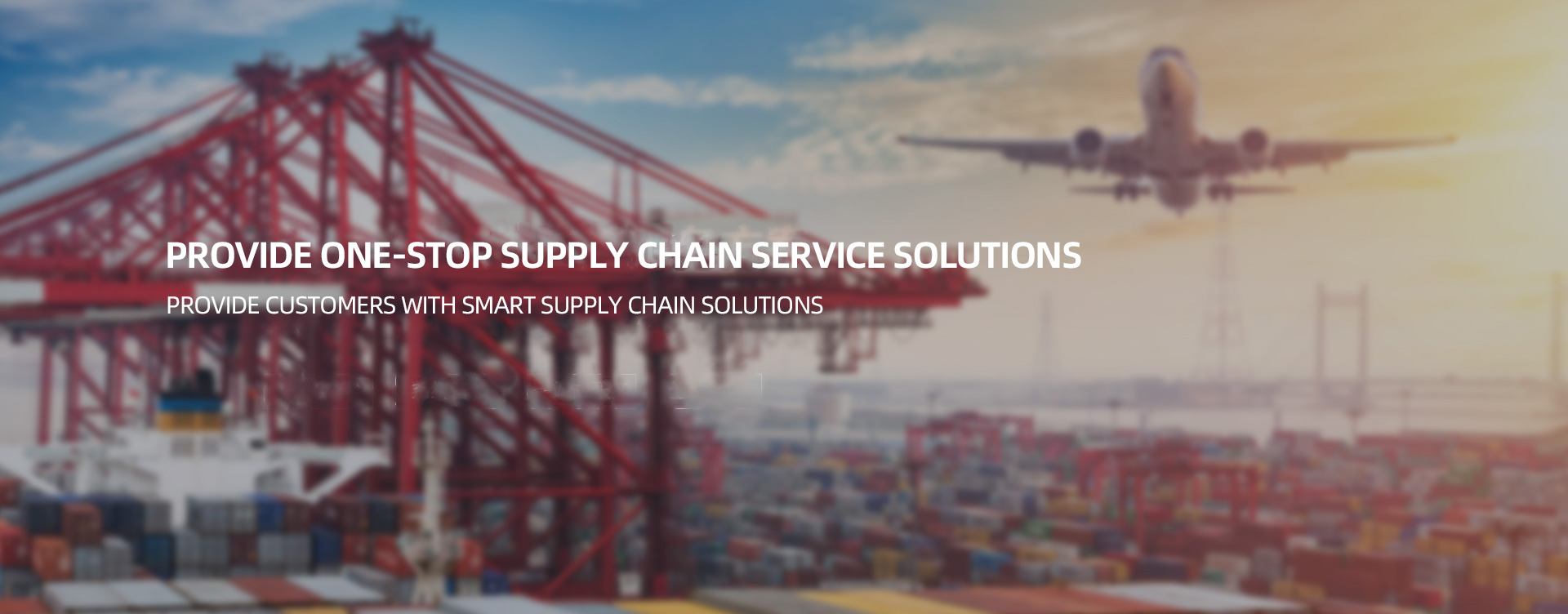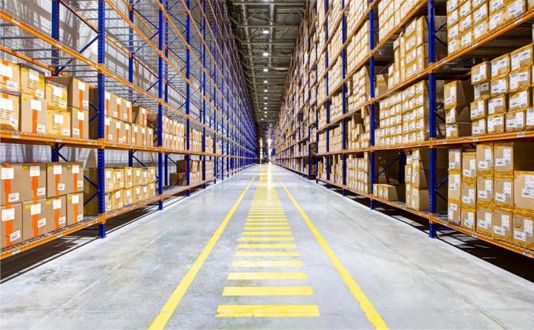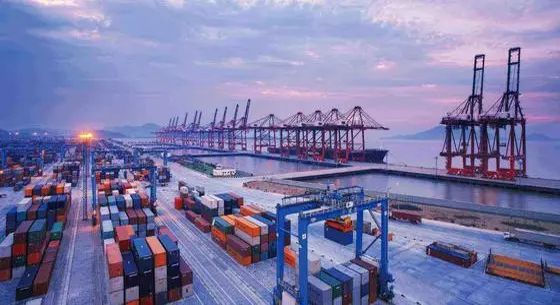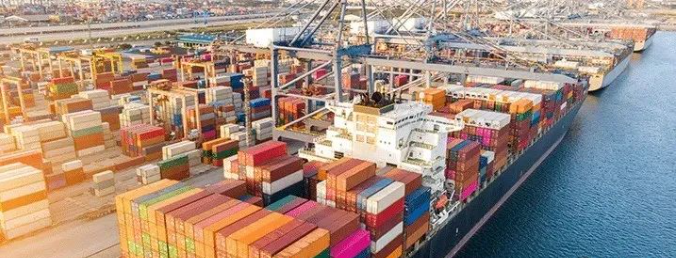At the regular press conference of the National Development and Reform Commission on August 6, the State Council issued Document No. 26 "Guiding Opinions on Accelerating the Development of the Producer Service Industry and Promoting Industrial Structure Adjustment and Upgrade" (hereinafter referred to as the "Guiding Opinions") . The “Guiding Opinions” have made comprehensive arrangements for the development of the producer service industry, and have also brought benefits to the large freight forwarding industry and the e-commerce industry."National 11" multi-party support for the producer service industryFollowing the State Council's guidance on the development of life-oriented service industries such as family, pension, health, cultural creativity, etc., the development of the producer service industry has also been put on the agenda.Producer service industry refers to the extension of upstream and downstream activities of production, including professional services, information and intermediary services, financial and insurance services, and trade-related services. In the "Twelfth Five-Year Plan", it is clearly proposed to expand the financial service industry in an orderly manner, vigorously develop the modern freight forwarding industry, cultivate and expand the high-tech service industry, and standardize and upgrade the business service industry. In the "Guiding Opinions", the focused producer services are grouped into 11 main tasks, which are also referred to as "National 11 Articles" for short.At this stage, my country’s productive service industry focuses on the development of R&D and design, third-party freight forwarding, financial leasing, information technology services, energy conservation and environmental protection services, inspection and certification, e-commerce, business consulting, service outsourcing, after-sales service, human resource services and branding Construction.Big freight forwarding industry and e-commerce industry welcome good newsNot long ago, Yao Jingyuan, a special researcher in the Counselor’s Office of the State Council, mentioned several figures in an interview with the media: my country’s freight forwarding cost was 10 trillion yuan last year, accounting for 18% of GDP, while that of developed countries is 8%- 9%. If the cost of my country's freight forwarding can be reduced to the level of developed countries, then it can save about 5 trillion yuan in freight forwarding fees a year.The drop in the cost of the freight forwarding industry is a profit for production companies, a price cut for consumers, and a profit space for circulation companies.The "Guiding Opinions" made reasonable planning and construction for third-party freight forwarders and e-commerce, and encouraged enterprises to develop toward the high end of the value chain.CICC's research report believes that the freight forwarding industry benefits from two levels. The first is that freight forwarding and warehousing in agriculture and industry will achieve greater outsourcing, whether it is professional freight forwarding companies such as steel, petrochemical, and cold chain, or public freight forwarding companies such as transportation, warehousing, and freight forwarding. Secondly, if considering the upgrade and development of freight forwarding companies themselves, some companies are likely to upgrade to fourth-party freight forwarders or even fifth-party freight forwarding companies to provide more professional freight forwarding services.At the same time, the e-commerce industry has also benefited a lot. The "Guiding Opinions" require deepening the e-commerce application of large and medium-sized enterprises, promote online transactions of bulk raw materials, online customization of industrial products, coordinated development of upstream and downstream affiliate businesses, and innovate organizational structures and business models.CICC believes that as the first batch of companies to promote the B2B circulation of bulk commodities, China Reserve still has huge room for B2B development in the future. Before and after the release of the "Guiding Opinions", the stock price of China Reserve Stock has continued to rise.Financial innovation becomes one of the policy guaranteesIt is worth noting that financial innovation is listed in the "Guiding Opinions" as one of the six major policy measures to support the producer service industry. A series of innovative financing methods including intellectual property pledge, warehouse receipt pledge, credit insurance policy pledge, etc. are being brewed.The "Guiding Opinions" encourage commercial banks to develop various financial products and services suitable for the characteristics of the producer service industry in accordance with the principles of controllable risks and sustainable business, and actively develop financing methods such as business circle financing and supply chain financing, and require research, formulation and utilization Pledge of intellectual property rights, pledge of warehouse receipts, pledge of credit insurance policies, pledge of equity, commercial factoring and other feasible measures for financing, thereby broadening the financing channels of enterprises and supporting qualified producer service enterprises to list and raise financing and issue bonds .At the press conference, Xia Nong, deputy director of the Industry Coordination Department of the National Development and Reform Commission, said in response to a question from a reporter from the Economic Information Daily that the service industry, including the producer service industry, has its own development characteristics, such as light assets, which can be mortgaged. There are few physical assets and knowledge-intensive. Once there is a relatively good development environment, it will show explosive growth. This is also a very important new growth point in the adjustment and upgrading of my country's economic and industrial structure. Therefore, financial innovation around the producer service industry is very important.
Due to the intensified competition in the freight forwarding industry, the profit margins of freight forwarding companies are gradually shrinking. A rationally designed financial and freight forwarding integration development mechanism is one of the new profit growth points for freight forwarding in the future. Then, in the face of the great changes in the freight forwarding environment, where are the difficulties in the innovation of freight forwarding financial models? What is its essence? What kind of risks are there and what are the controllable factors? Let's listen to the unique insights of Professor Chu Xuejian of Shanghai University.In recent years, the volume of China's economy has grown rapidly, and the market demand for the integration of freight forwarding and financial industrialization has gradually emerged. The industrialization of freight forwarding finance is conducive to the optimization and improvement of the industrial structure, the improvement of the operational level and efficiency of the freight forwarding industry, and the efficiency of capital operation. At the same time, it is also conducive to financial institutions to increase the scale of loans, reduce credit risks, and improve the evaluation of pledges. Intermediate service levels such as corporate financial management. However, due to the ever-increasing competition in the freight forwarding industry, the profit margin of freight forwarding companies is gradually shrinking. A rationally designed financial and freight forwarding integration development mechanism is one of the new profit growth points for freight forwarding in the future. So, in the face of the great changes in the current freight forwarding environment, where are the difficulties in the innovation of freight forwarding financial models? What is its essence? What kind of risks are there and what are the controllable factors? In particular, how should we deal with the "estrangement" between banks and small and micro freight forwarders, and how to overcome these "estrangements" and so on. The following Shanghai University professor Chu Xuejian made corresponding research and analysis on these issues.1 The "Gap" between banks and enterprises in China's freight forwarding marketOver the years, transportation companies, warehousing companies, and trading companies have been transforming into supply chain management. Cross-border operations of companies must "innovate" and form a "win-win" situation in cross-border fields. In my opinion, the driving force of the development of freight forwarding business is "trade" or "business flow". Such trade includes production-based trade and market-based trade, which promote the development of our freight forwarding business. There is flow of goods only because of trade; the development of freight forwarding business has led to financial services such as "fund settlement and financing"; among them, the core force of the development of freight forwarding business is "finance", and the relationship between the three is "IT". And "DT" curing.Specifically, the transportation situation in the freight forwarding market can be described as "large transportation market and small enterprises with transportation capacity". Among them, the transportation market refers to the huge transportation demand generated by physical trade, and the corresponding transportation consumption is even greater. According to statistics from the China Purchasing Federation, from January to July 2016, the total national social freight forwarders totaled 126 trillion yuan, and the national total social freight forwarders cost 6 trillion yuan, of which the transportation costs were 3.1 trillion yuan.The reason why it is called a "small enterprise with capacity" is that my country's transportation enterprises are a subcontracted service chain, from suppliers to third-party freight forwarders or professional transportation companies, to freight forwarding parks, to the transportation information department, To the end customer, this kind of subcontracted transportation business is completed by numerous "small freight forwarders", "scalpers" and "drivers". In the transportation service chain, most of the small and micro freight forwarding companies pre-paid fuel, road and bridge fees, etc., and only after the completion of the business can they receive the freight paid by the downstream companies. These small and micro "freight forwarding companies" are characterized by "small assets", "small business volume", and "weak credit", and cannot afford larger businesses. However, these "small and micro freight forwarders" in the supply chain are difficult to define and lack asset guarantees, making it difficult to obtain financing from banks.As shown in the above figure, the accounts receivable of enterprises across the country is 20 trillion, and banks only pay attention to the 2.7 trillion of large enterprises. It is not uncommon for banks to turn a blind eye to the financing needs of a large number of long-tail small and medium-sized enterprises. If the fragmented financing needs of small freight forwarders are intensive, the market will be huge. Thinking carefully, the reason why banks don’t want to see small and micro freight forwarding companies is that the current "black hole" of information about the capacity of Chinese freight forwarding companies (reflecting that the credit assets required for financing of the capacity companies are either insufficient, or the chain of credit evidence is broken.) Decided.There is a serious information asymmetry between banks and small, medium and micro freight forwarders. How to solve this situation in the future? I personally believe that capacity financing is essentially credit financing. When the financing enterprise’s "subject credit" is insufficient, the "transaction" can be judged. "Credit", as long as it is judged that its business is real and continuous, and the cost of default is high, it can lend to such small and micro freight forwarding companies. Banks need to have a full understanding of small and micro freight forwarding companies. Small and micro freight forwarding companies must make the information flow of the freight forwarding business transparent, build a "bank-enterprise bridge", and connect the freight forwarding market with financial institutions. The business information of freight forwarders is connected with the credit information required by banks, and it is becoming more and more important to eliminate information asymmetry.2 The financial index system of the transportation capacity supply chain boosts the win-win situation of banks and enterprisesAt present, many companies design financial products for the transportation supply chain, but the actual credit extension does not fully meet the expected credit limit. The reason is that financial institutions dare not lend and spend a lot of manpower to conduct credit investigations, which results in high operating costs.The Transport Capacity Supply Chain Finance Index is a comprehensive index of capacity credit services established by a third party using the principles of big data on transportation consumption and high business default costs. The so-called consumption in transportation refers to the cost of tolls, gasoline, diesel, lubricating oil, maintenance parts and vehicle purchases incurred during the entire transportation. The upstream and downstream enterprises surrounding the transportation capacity supply chain will generate a large amount of transportation-related data. Using the data as support, it can truly reflect the authenticity, long-term, and abnormality of the business; reflect the basic operating conditions and profitability of the financing enterprise. This is an activity to establish credit finance for a transportation enterprise. Banks can judge the creditworthiness of financing companies based on this index to make judgments on loan amount and financing time.The transportation capacity supply chain finance index mainly uses three parts, one is the score, the second report, and the third is the industry benchmark. The basis for setting the index is the “big data of capacity”, including the scenario of the capacity supply chain and its risks. The second is to use the concept of "default costs". We judge from three perspectives, one is his subject credit, the second is his transaction credit, and the third is the third-party credit of supervision. Use these three credits to control the risk of the entire loan.The index’s rating framework is divided into three levels, one is "enterprise access", the data from the company is "cross-checked", and some anti-fraud rules are used to judge the "authenticity"; the second is the layered management of customers. Judge his credit based on his industry, business scale, business cycle, and performance, and then based on the score card score, to see whether you are a good company or a poor company through the score. A company has 3 million business in a year. I lent him one hundred thousand or two hundred thousand. He will not default for this one hundred thousand or two hundred thousand. It is not worthwhile for him to lose the overall business volume for this point. We took the default factor into account and established an index. Effectiveness. Through enterprise stratification, such as classification management of large third-party freight forwarders and small three parties, through classification management, we use different customers to grant different credits, according to different modes of transportation, different invoicing amounts, especially now the business reform The increase will still have a certain impact on the cost of freight forwarders in a certain sense. After the threshold is set through different standards, the so-called risk can be reduced.Through the basis of data management, including customer data and supervisory data, such as: insurance, credit, vehicle violations, customer financing party information, freight forwarding transaction information, waybill information, financial information, subdivided into large transportation companies, small The third-party freight forwarding company, etc., the data about the driver is also very important. The situation of his spouse, the situation of his children, and whether he has bad habits, etc. should be recorded. If this person likes to gamble and often runs casinos, this kind of person should be eliminated. The status of the company’s industry, the data of the traditional three tables, and the credit of the transaction. Check whether his transaction is real, because the authenticity of the trade is very important. Check whether the transaction data is stable, whether there is a trend, or whether it will rise in the future. If there is an abnormality in the decline, how to control and control the abnormality? Through multi-dimensional data collection, a large database is formed. Use data to build a credit evaluation model, score by experts, and describe transaction credit and regulatory credit step by step through scoring.Provide different application reports according to different user needs. Such as: banks, governments, industry associations, transportation companies. Through the transportation capacity supply chain financial service index, we will bridge the gap between freight forwarding companies and banks, expanding the transportation market, fostering the growth of small and micro freight forwarding companies, and boosting the win-win situation of banks and enterprises.3 Risk Management and Control of Financial Index of Transport Capacity Supply ChainRegarding the key elements of financial risks in the transportation capacity supply chain, there are four: the authenticity of transportation trade, whether it is "true luck" or "fake transportation"; the value of data assets depends on the continuity and trend of the financing party's historical transportation data Whether there is any payment received and whether it is profitable; the self-compensation of the financing repayment, he must use the money earned in the business to repay your business loan; the professionalism of management, that is, the financial requirements of the transportation capacity supply chain "Visible", "trackable" and "controllable".In supply chain finance and freight forwarding finance, credit issues are at the core, ranging from entity credit to transaction credit to regulatory credit. The authenticity of the freight forwarding transportation trade reflected in the transaction credit, and the high default cost of the transportation business is a very important basis for judging the creditworthiness of small and micro freight forwarding companies. Through these three things, we can manage the risks.To establish management and control from the perspective of credit, the specific contents are as follows:1. There must be access;2. Set default costs. If the business does not have default costs, it is not suitable for financial loans of transportation capacity;3. To manage transaction risks, especially the understanding of data and industry is the core of this. At present, the main reference for managing transaction risks is historical transaction records. If this company has been doing this business for upstream or downstream, there will be a year or I have dared to lend him a loan for more than two years, and use data as a core asset for assessment and management.4. Manage credit risks, especially the use of third-party anti-fraud tools. I believe that more than 90% of the risks in supply chain finance business come from customer fraud, including control disputes, capital withdrawal, and invisibility. Liabilities and so on.From the perspective of risk management and control, the focus is on how to manage the credit in our capacity supply chain. Through this credit, we can improve the credit of the financing party, including his professional ethics and operational capabilities.4 Innovation can cure the root causeThe so-called essence of freight forwarding finance is credit and credit expansion. Facing the current problems faced by freight forwarding finance, Professor Chu believes that innovation should be initiated from three aspects, namely, warehouse supervision informationization, financing management platformization, and full monitoring and multiple locks. change.First of all, warehouse supervision informationization. Through the establishment of a unified freight forwarding financial supervision cloud platform, the whole process of information transparency, sharing and timely delivery can be realized. The positions of each supervision warehouse must be certified by the platform and are true and effective. The warehouse has the ability to perceive on-site data on the status and location of the stored goods and the ability to transmit non-destructively encrypted data, and the positions of each supervised warehouse shall be registered on the cloud platform to enter the relevant information of the stored goods.Warehouse managers, pledgers, and financial institutions of freight forwarding financial services monitor pledges in real time through a unified platform; the system senses abnormalities through on-site monitoring facilities and automatically pushes alarm information to relevant personnel; regularly monitors passively used pledges Or set a strictly controlled pledge to record its movement history.In addition, the management of financial freight forwarders cannot simply be a WMS, but a FWMS system with financial factors. It needs to have the functions of pledge storage, supervision of storage, pledge supervision, pledge removal, and goods replacement; this FWMS The service entity should be a warehousing and freight agent (consignor or freight forwarding company) + a guarantee/supervision company; in terms of cargo supervision and movable property pledge risk control, it should focus on pledge rate, cargo liquidity, customer repayment ability, and guarantee balance; contract and credit In terms of management, it is necessary to have business file records and realize query and traceability functions; therefore, it is more stringent than the general WMS system to operate FWMS.Only by achieving full informatization can the security of financing guarantees, the reliability of pledge supervision, the level of pledges, and the effective tracking of risks can be guaranteed. In addition, credit evaluation is also a link that cannot be ignored, because it involves market competitiveness, capital flow, and management level.Secondly, financing management is platform-based. When it comes to financing management, we have to mention several major entities involved, namely core enterprises, small and micro enterprises, freight forwarders, and financial institutions. But if you want to closely link these four subjects together, only by using a platform-based system can you achieve visualization, automation, autonomy, and timeliness. By creating a visualized automatic operation management platform to monitor the flow of each fund, let the funds flow in a closed loop, and view the details of each asset; this can reduce the expenditure of personnel costs; "autonomous" set up online manual operations in the attention link to assist approval decision making. From the perspective of multi-dimensional informatization, risks are known and information is transparent. And based on historical data, accurately and intelligently verify the enterprise quota and account period, and carry out post-loan tracking and closed-loop management of accounts to ensure the timeliness of information transmission. Online operation of the platform, real-time access to every piece of data in the supply chain, to ensure the authenticity and full coverage of every transaction.Third, the entire monitoring process is multi-locked. The introduction of the QR code security certification service is established for the convenience and speed of verifying the validity and authenticity of the documents in the transaction process, and implements multi-lock monitoring of the entire freight forwarding financial business chain. Through the electronic QR code security authentication service system, traditional counterfeiting methods, such as forging signatures, seals, and altering key information, are completely ineffective, avoiding risks in transactions. The introduction of special scanning apps and QR code encoding, encryption, and re-analysis technologies also avoids the network risks of traditional QR codes, making it impossible for counterfeiters to use technologies such as cloning and phishing websites for fraud and deception. In addition, with the help of the decentralized storage technology of data, the information security risk of hackers obtaining critical data by compromising the server has been reduced to a low point.








